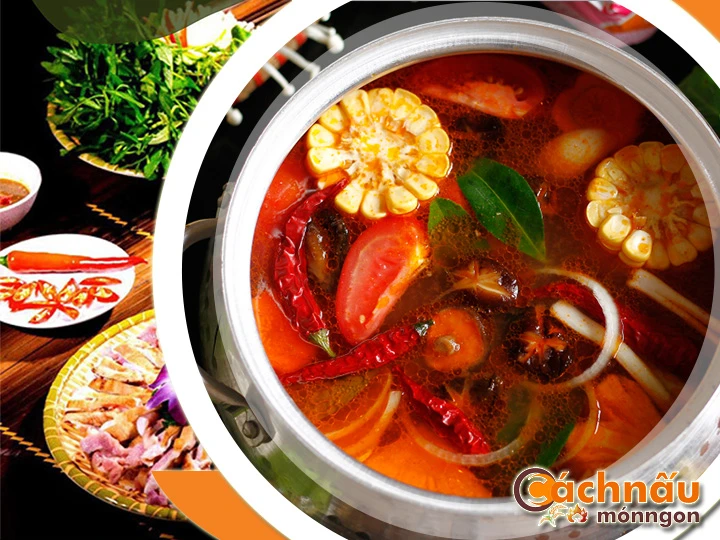Master the Authentic Rabbit Hot Pot Tips You Must Try - Lẩu thỏ
Master the Authentic Rabbit Hot Pot Tips You Must Try - Lẩu thỏ
Blog Article
Hot pot rabbit, a tasty and traditional delicacy, has been valued across different food cultures for centuries.

This comprehensive guide explores each and every thing you need to comprehend about rabbit hot pot, from its old-world roots to contemporary twists, health-focused properties, and comprehensive walkthrough for creating the ideal dish at home. Whether you are a culinary expert or a novice cook, this guide will empower and educate you to achieve expertise of rabbit hot pot.
DISCOVERING THE ORIGINS ALONG WITH CULTURE ABOUT {BRAISED RABBIT DISH|HEARTY RABBIT MEAL|RABBIT HOT POT|RABBIT STEW|BUNNY CASSEROLE|RABBIT CUISINE|STEWED RABBIT
Rabbit hot pot is a unique and time-honored dish with significant cultural roots in multiple countries. Its admiration stems not only from its rich flavor but also from its history and value.
Rabbit hot pot represents a unique and heritage-rich dish with deep cultural roots in diverse locales. Its admiration stems not only from its hearty flavor but also from its heritage and meaning.
- Early Beginnings: Rabbit stew began in countryside where rabbits were a popular, protein-rich food source. In China’s past, it was a household staple, particularly during holidays.
- Widely Popularized: In Western countries like Italy, rabbit was frequently added to soups, transforming into modern versions of braised dishes as the dish became internationally recognized.
2. Stewed Rabbit in Cultural Practices of East Asia.
- In China: Known as China’s beloved rabbit hot pot, rabbit hot pot is an essential part of spicy Sichuan cuisine, admired for its fiery flavors and commonly shared during special celebrations.
- In Korea and Japan: While less common, rabbit hot pot is sporadically cooked as a therapeutic meal in Korea, or borrowing ideas from Japanese hot pot traditions in the Japanese archipelago, combined with local produce and flavors.
- Vietnam: Although rabbit hot pot is not typically eaten every day, it is well-known during special times or in villages where rabbit meat is plentiful. It is often cooked with distinctive spices such as fresh lemongrass, fresh ginger, and fiery chili, paired with fresh vegetables like morning glory, brassica leaves, or water mimosa. This dish is enjoyed for its exceptional taste and healthy attributes, frequently shared at family and friend reunions.
Trong văn hóa Việt Nam, tuy không hoàn toàn là món ăn thường nhật đều đặn mỗi ngày, nhưng nổi tiếng trong những dịp đáng nhớ hoặc ở khu vực nông thôn, nơi thịt thỏ dồi dào. Thường được nêm nếm bằng hương liệu như sả, thơm gừng, và ớt cay, kết hợp với rau tươi bao gồm kangkong. Món ăn này yêu mến bởi người Việt nhờ vị ngon đặc biệt và nhiều giá trị dinh dưỡng, thường được thưởng thức tại những buổi hội họp.
3. Braised Bunny Dish integral to Culinary Practices of Europe.
- In France: Frequently enjoyed as a robust stew with red wine, herbs like rosemary, and classic root vegetables. Rabbit hot pot is a traditional recipe for family reunions.
- In Italy: The dish “Cacciatore”, featuring rabbit cooked with tomatoes and wine, is a early version of rabbit hot pot recipes.
RECIPES AND TECHNIQUES FOR COOKING RABBIT HOT POT
Rabbit hot pot is a adaptable dish that blends natural components, savory broths, and unique cooking techniques to create a rich and satisfying meal. Below are essential tips into the primary methods and strategies to excel in rabbit hot pot.
The Fundamental Recipe for Rabbit Hot Pot
* Ingredients:
- 1 whole rabbit (cut into pieces)
- 4 cups of broth (bone broth)
- Vegetables (mushrooms)
- Spices and herbs (ginger)
- Seasonings (soy sauce)
- Optional: noodles for serving
* Cooking Instructions:
- Prepare the Rabbit: Wash and cut the rabbit into pieces. Marinate with a pinch of salt, black pepper, and a drizzle of soy sauce for half an hour to enhance the flavor.
- Prepare the Broth: Heat a pot with a bit of oil. Fry garlic and sliced ginger until golden. Add your choice of broth and bring it to a boil.
- Add the Rabbit: Add the rabbit pieces into the pot and let them gently boil on a low flame for around half an hour until cooked through.
- Incorporate Vegetables: Add your preferred vegetables and cook until they are softened but still fresh-looking.
- Serve: Transfer the hot pot to a portable stove. Serve with side dishes and side options like rice or noodles.
Key Techniques for Cooking Rabbit Hot Pot
- Flavor Enhancement:
. Marinate the rabbit with a combination of salt, pepper, and spices to intensify its base flavor.
. For more depth, use cooking wine or a mix of fragrant herbs.
- Adding Ingredients Strategically:
. Start by boiling the rabbit in the broth to extract its savory taste.
. Layer vegetables strategically based on their cooking times.
- Cooking Time:
. Avoid cooking too long the rabbit, as it can lose tenderness.
. Test for doneness by checking if the meat easily separates from the bone.
- Taste Customization:
. Adjust the broth by adding more spices as needed.
. Experiment with lẩu thỏ đơn giản different flavor profiles, such as creamy European-inspired variations.
Secrets to a Perfect Rabbit Hot Pot
- Quality Matters: Always choose fresh rabbit meat and in-season greens for the best results.
- Achieve Harmony: Be aware of the spiciness in the broth. Taste and adjust frequently during cooking.
- Dipping Sauces: Offer a range of sauces like garlic-chili oil or soy-based dips to elevate the dining experience.
- Visual Appeal: Use a tabletop cooker or serve the hot pot as the centerpiece to encourage communal dining.
With mastery of these cooking techniques, you can prepare a rabbit hot pot that’s both flavorful and visually appealing, making it a highlight for any meal or occasion.
Report this page
